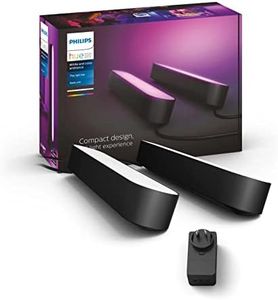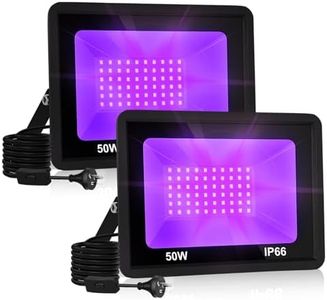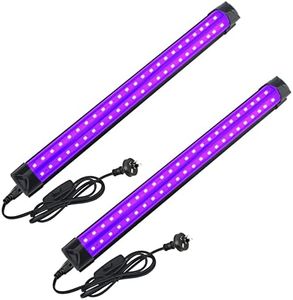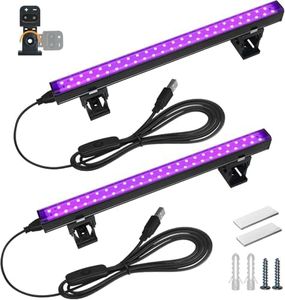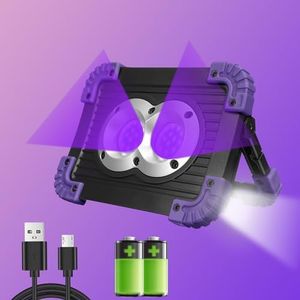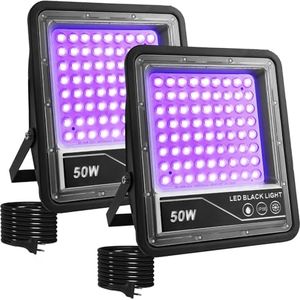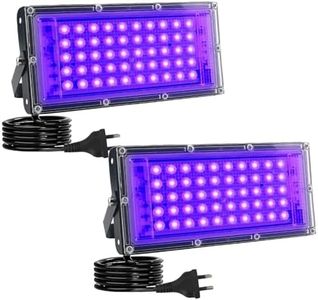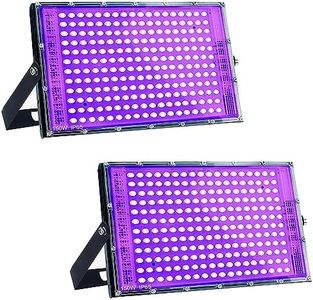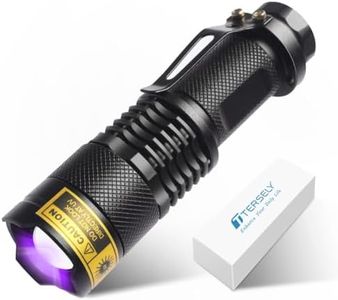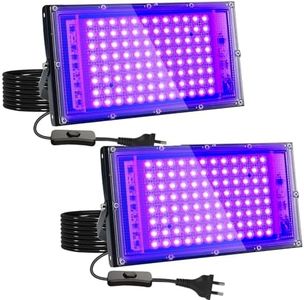We Use CookiesWe use cookies to enhance the security, performance,
functionality and for analytical and promotional activities. By continuing to browse this site you
are agreeing to our privacy policy
10 Best Black Lights
From leading brands and best sellers available on the web.By clicking on a link to a third party's website, log data is shared with that third party.
Buying Guide for the Best Black Lights
Picking a black light can be both fun and useful, depending on what you need it for—whether it's for parties, detecting stains or leaks, decorating, or discovering things that glow under UV light. The right product will suit your space, purpose, and convenience needs, so it helps to know what key features to look for before making a choice. Understanding the key specs of black lights will make your shopping process much easier and help you get the most out of your purchase.Type (Bulb, Tube, Strip, Flashlight)Black lights come in several forms including bulbs (that screw into standard sockets), fluorescent tubes, flexible LED strips, or portable flashlights. Each type serves different uses: bulbs and tubes are great for room lighting or larger spaces, strips are handy for decorating or outlining shapes, and flashlights are perfect for spot-checking specific areas. To pick the right type, consider where and how you'll use your black light. For large static spaces, go with bulbs or tubes. For portable use or searching, a flashlight is most convenient. Decorative purposes often fit best with LED strips.
Wavelength (Nanometers)The wavelength of a black light is measured in nanometers (nm), and it's important because it determines the effectiveness for producing that classic 'glow.' Most quality black lights emit UV-A light in the 365-400nm range. Lower wavelength (closer to 365nm) is better at creating strong, visible fluorescence and is less visible as purple light to the naked eye. Higher values (closer to 400nm) mean more visible purple light and weaker fluorescent effect. For parties, art, or fluorescence detection, lower wavelengths (like 365-385nm) are ideal. If you're just creating a fun glow in a room, higher values are acceptable.
Wattage / Light OutputThis spec is about how strong or bright the black light is. Higher wattages or higher lumens mean the fixture can cover a bigger area and make objects glow more intensely. For covering a whole room or achieving a dramatic effect, look for higher wattage or more LEDs. For small projects, close-up work, or when portability is a priority, lower wattage is enough and more energy efficient. Match the wattage to the size of the space and the intensity you want.
Coverage AreaThis tells you how much space the black light can effectively illuminate. Some black lights are designed for small, focused applications and only cover a few feet, while others can light up entire rooms or outdoor spaces. If you want to light a dance floor or an entire wall, look for a larger coverage area. For spot-checking or highlighting specific items, a smaller, more focused coverage is sufficient.
Power Source (Plug-in, Battery, USB)Black lights can be powered by plugging into the wall, running off batteries, or using USB connections. Plug-in types are best for permanent setups or when you need continuous use. Battery-powered or USB black lights offer portability for moving around, using outdoors, or inspecting things on the go. Choose the power source that matches your mobility needs and expected usage duration.
Durability and Housing MaterialThe sturdiness of the black light is mostly determined by its build materials and design. Lights with metal housings or reinforced plastic are more durable and suitable for frequent handling, outdoor use, or environments where bumps and drops might happen. For decorative, fixed, or light-duty use, lighter plastic constructions are usually sufficient. Consider how often the light will move and the conditions it'll be used in to decide how tough it needs to be.
